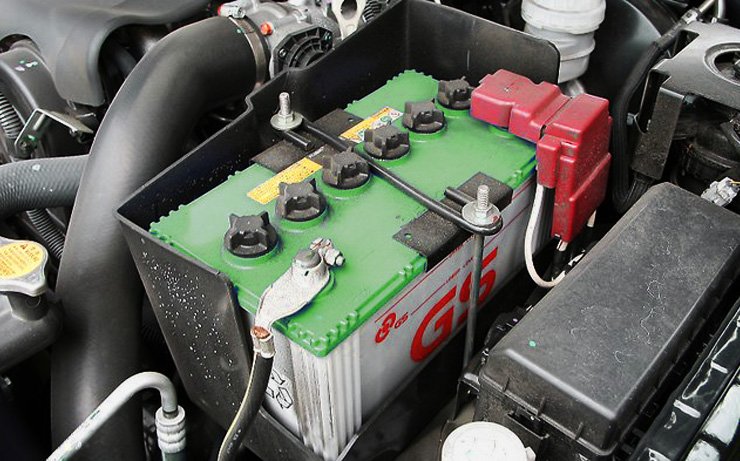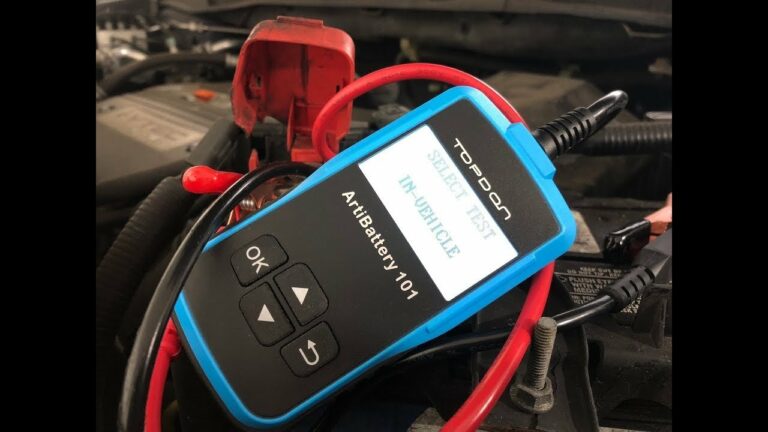How To Dry A Wet Car Battery: Simple Techniques That Work!
Got a wet car battery and looking for a quick fix? Wondering how to dry a wet car battery and get it up and running again? You’ve come to the right place! We’ve got you covered with some simple steps to help you tackle this issue head-on. Whether it’s due to a leak or accidental spillage, a wet car battery can lead to corrosion and potential damage. But fret not! We’ll guide you through the process of safely drying your wet car battery, step by step. So let’s get started and bring that battery back to life!
How to Dry a Wet Car Battery?
Drying a wet car battery is an essential process that can help restore its functionality and prevent potential damage. Whether you accidentally spilled water on the battery or encountered a leak, it’s crucial to address the situation promptly to avoid any long-term consequences. This comprehensive guide will walk you through the steps needed to safely dry a wet car battery and get it back in optimal condition.
1. Safety First: Precautions to Take
Before we begin, it’s important to prioritize safety when dealing with car batteries. Here are some precautions to keep in mind:
- Wear protective gloves and safety goggles to shield yourself from any acid exposure or other potential hazards.
- Ensure the vehicle is turned off and the ignition is in the off position before inspecting or working on the battery.
- Keep an appropriate fire extinguisher nearby, as a safety measure in case of emergencies.
2. Assess the Battery and Identify the Cause
Before attempting to dry the battery, it’s important to assess the situation and determine the cause of the wetness. This will help you understand the severity of the situation and plan your next steps accordingly. The common causes of a wet car battery include:
- Water spills or accidents
- Battery leaks
- Condensation buildup
2.1 Identifying Water Spills or Accidents
If you have accidentally spilled water or any other liquid on the battery, it’s crucial to act quickly to minimize the damage. Start by following these steps:
- Turn off the engine and disconnect the battery cables, starting with the negative terminal (black cable).
- Remove the battery from the vehicle, if possible, to prevent further liquid seepage into other components.
- Use a cloth or paper towels to gently dab and absorb any visible liquid from the battery’s surface.
- Allow the battery to air dry for several hours, ensuring no residual moisture remains.
- Inspect the battery for any signs of damage or corrosion. If you notice any, it may be necessary to replace the battery.
- Reinstall the battery, reconnecting the positive (red) terminal first, followed by the negative terminal.
- Start the engine and check if the battery functions properly.
2.2 Dealing with Battery Leaks
Battery leaks can be a more challenging issue to address, as they often stem from internal damage. If you suspect a leak, follow these steps:
- Disconnect the battery cables, starting with the negative terminal.
- Remove the battery from the vehicle, taking care to ensure no acid spills onto other components.
- Place the battery in a well-ventilated area, away from any flammable materials.
- Carefully inspect the battery casing for cracks, bulges, or other signs of damage.
- If you identify a leak, it is recommended to consult a professional automotive technician to assess the extent of the damage and determine if the battery can be repaired or needs replacement.
2.3 Addressing Condensation Buildup
Condensation can occur when there are significant temperature fluctuations in the environment. While it is a normal process, excessive condensation can lead to wetness on the battery terminals and affect its performance. Here are a few steps to address condensation buildup:
- Inspect the battery for visible signs of excess condensation, such as water droplets or wet surfaces.
- Ensure the battery is securely fixed in the vehicle and properly sealed.
- Consider installing a battery insulator or heat shield to regulate temperature changes and minimize condensation formation.
- Regularly monitor and clean the battery terminals to prevent corrosion or damage caused by moisture.
3. Preventive Measures to Avoid Battery Wetness
Taking proactive steps to prevent battery wetness can help extend its lifespan and avoid potential issues. Here are a few preventive measures to consider:
- Regularly inspect the battery for any signs of leaks, cracks, or damage.
- Maintain proper fluid levels by regularly checking and replenishing distilled water if necessary (for non-sealed or non-maintenance-free batteries).
- Ensure battery terminals are clean and free from corrosion by routinely cleaning them with a battery cleaner or a mixture of baking soda and water.
- Protect the battery from extreme temperatures by parking the vehicle in a shaded area or using a battery insulator or wrap.
- Consider using a battery maintenance charger or conditioner to keep the battery charged and prevent sulfation, which can cause damage and reduce performance.
4. Seeking Professional Help
In some cases, addressing wetness or damage to a car battery may require professional assistance. If you are uncertain about the severity of the situation or lack the necessary expertise, it is recommended to consult an experienced automotive technician. They can accurately assess the condition of the battery, provide appropriate solutions, and ensure your safety.
5. Conclusion
Drying a wet car battery is a crucial process to prevent damage and restore optimal performance. By following the steps outlined in this guide, you can effectively address various situations, from accidental spills to leaks and condensation buildup. Remember to prioritize safety, take necessary precautions, and seek professional help when needed. With proper care and preventive measures, you can prolong the lifespan of your car battery and enjoy reliable performance on the road.
6. FAQ
Here are some frequently asked questions related to drying a wet car battery:
6.1 Can I use a hairdryer to dry a wet car battery?
Using a hairdryer or any external heat source to dry a wet car battery is not recommended. It may lead to excessive heat buildup and cause damage to the battery or its surrounding components. It’s best to allow the battery to air dry naturally.
6.2 How long does it take for a wet car battery to dry?
The drying time for a wet car battery can vary depending on factors such as environmental conditions and the amount of moisture present. It is generally recommended to allow the battery to air dry for several hours or overnight to ensure complete drying.
6.3 What should I do if I notice corrosion on the battery terminals?
If you notice corrosion on the battery terminals, it’s important to clean them promptly. Mix a solution of baking soda and water, apply it to the terminals using a brush, and gently scrub away the corrosion. Rinse with clean water and ensure the terminals are completely dry before reconnecting the battery cables.
6.4 Can a wet car battery be revived?
In some cases, a wet car battery can be revived if the damage is minimal and limited to the wetness on the surface. By following the proper drying steps and addressing any visible signs of damage or corrosion, you may be able to restore the battery’s functionality. However, severe leaks or internal damage often require battery replacement.
the correct way to clean your car battery
Frequently Asked Questions
How do I dry a wet car battery?
To dry a wet car battery, you need to follow these steps:
1. Safety first: Make sure to wear protective gloves and eyewear before handling the battery.
2. Disconnect the battery: Start by disconnecting the battery from the vehicle’s terminals, removing the negative cable first followed by the positive cable.
3. Remove excess water: If there is any standing water on the battery, use a cloth or sponge to carefully soak it up.
4. Allow air circulation: Place the battery in a well-ventilated area, away from direct sunlight, and let it air dry for several hours.
5. Clean the terminals: While the battery is drying, clean the battery terminals using a mixture of baking soda and water, and a wire brush.
6. Test the battery: After the battery is completely dry, reconnect it to the vehicle and test it with a voltmeter or by starting the car.
7. Seek professional help if necessary: If the battery doesn’t work or continues to be wet after drying, it may indicate a more serious issue. Consider consulting a professional mechanic or replacing the battery.
Can I dry a wet car battery using a hairdryer?
No, it is not recommended to use a hairdryer to dry a wet car battery. Hairdryers generate heat, which can damage the battery and cause even more issues. It is best to let the battery air dry naturally in a well-ventilated area.
How long does it take to dry a wet car battery?
The drying time for a wet car battery can vary depending on the amount of moisture present and the ambient temperature. Generally, it can take several hours for a battery to completely dry. It is recommended to leave the battery in a well-ventilated area for at least 4-6 hours or overnight to ensure thorough drying.
What should I do if my car battery gets wet in the rain?
If your car battery gets wet in the rain, it is crucial to take immediate action to prevent potential damage. Follow these steps:
1. Turn off the car: Ensure that the car is turned off before proceeding.
2. Inspect the battery: Check for any visible signs of water on the battery terminals or surrounding areas.
3. Disconnect the battery: Safely disconnect the battery from the vehicle’s terminals.
4. Dry the battery: Use a cloth or sponge to carefully soak up any standing water on the battery.
5. Allow air circulation: Place the battery in a well-ventilated area and let it air dry for several hours.
6. Clean and test the battery: Clean the terminals and reconnect the battery to the vehicle. Test it using a voltmeter or by starting the car.
7. Seek professional help if needed: If the battery doesn’t work or shows signs of damage, consult a professional mechanic for further assistance.
Can I use a fan to dry a wet car battery faster?
Using a fan to dry a wet car battery faster may seem like a good idea, but it is not recommended. While a fan can help improve air circulation, it can also cause the battery to overheat, which may damage it. It is best to let the battery air dry naturally in a well-ventilated area.
Is it safe to use a wet car battery?
No, it is not safe to use a wet car battery. Water or moisture on the battery can cause electrical shorts, corrosion, and other damage. It is important to dry the battery thoroughly before reconnecting it to the vehicle or attempting to use it.
Final Thoughts
Drying a wet car battery is a crucial step in maintaining its performance and prolonging its lifespan. By following a few simple steps, such as disconnecting the battery, removing excess water, and using a fan or hairdryer to dry the terminals, you can effectively dry a wet car battery. Additionally, taking preventive measures like regularly inspecting the battery for any signs of water accumulation and keeping it properly charged can help avoid future wetness issues. So, the next time you encounter a wet car battery, remember these steps to ensure its quick and efficient drying. How to dry a wet car battery? It’s as simple as following these steps.



